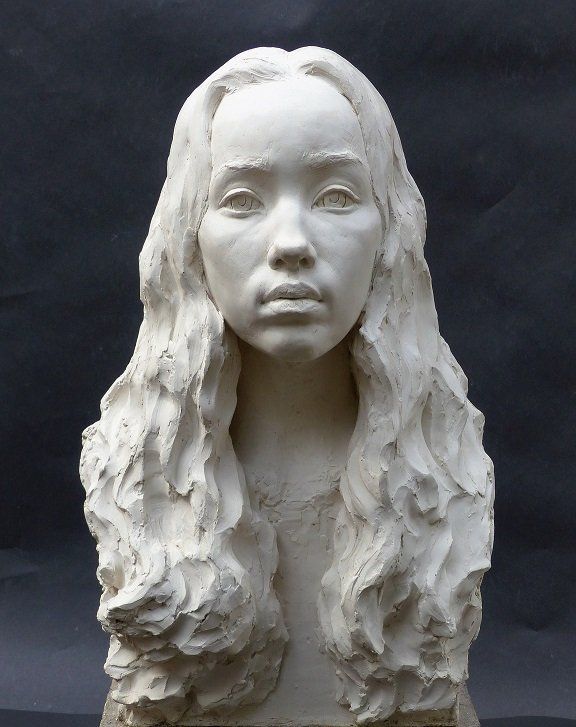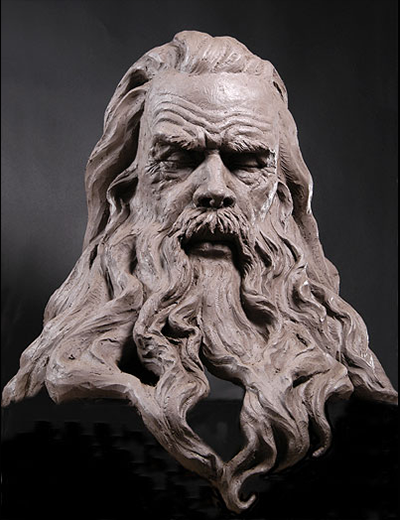Portrait Sculptor: Capturing Essence in Three Dimensions
Wiki Article
Sculptures in Public Spaces: Enhancing the Urban Landscape
Sculptures in public areas have become an important component of urban landscapes, considerably boosting the aesthetic allure and cultural identity of cities all over the world. Robert C Hitchcock Sculptor. These creative setups bring a historical importance, often mirroring the heritage and values of a community. Past their visual worth, sculptures likewise play a critical role in promoting community engagement and communication. They supply a focal point for public celebrations, motivate discussions, and create a sense of satisfaction and ownership among citizens. In addition, sculptures have the power to change mundane and or else dull spaces right into vibrant and vibrant settings, injecting imagination and imagination into the urban fabric. As cities continue to evolve, the cultivation of public art admiration comes to be increasingly essential in creating inclusive and habitable urban atmospheres.Historical Value of Sculptures in Urban Spaces
The historical importance of sculptures in metropolitan spaces is indisputable, as they serve as concrete depictions of the social, social, and imaginative heritage of a city. These sculptures not just improve the aesthetic charm of the urban landscape however also give a link to the past, allowing individuals to attach with their background and origins.Throughout history, sculptures have been used to commemorate crucial events, honor considerable individuals, and share the worths and perfects of a culture. From old worlds to contemporary times, sculptures have actually stood as long-lasting symbols of power, charm, and creative expression. They serve as a testimony to the creativity and craftsmanship of the musicians who produced them, along with the historical and social context in which they were created.
In addition to their visual worth, sculptures in urban spaces play a crucial role in enlightening and inspiring the public. Robert C Hitchcock Sculptor. They function as exterior galleries, allowing individuals to involve with art and background in a more interactive and available means. They trigger discussions, prompt thought, and urge representation, contributing to a better understanding and appreciation of the city's identification and heritage
Impact of Sculptures on Neighborhood Identity

Sculptures in public areas dramatically form and mirror community identification. These imaginative developments have the power to record the essence of an area, representing its values, background, and ambitions. By inhabiting famous placements in metropolitan landscapes, sculptures end up being icons that reverberate with site visitors and residents alike, working as an aesthetic representation of a community's identification.
When a sculpture is installed in a public area, it comes to be a prime focus that draws individuals with each other. It creates a sense of place and pride, fostering a collective identification among neighborhood members. The presence of sculptures can likewise influence the way individuals engage and view with their environments, adding to a positive sense of belonging and accessory to the area.
Additionally, sculptures can contribute in advertising cultural variety and inclusivity. They can celebrate the various cultural backgrounds and histories of a neighborhood, highlighting the contributions of various teams and promoting a feeling of unity and understanding. Contemporary Sculptures. Sculptures can function as effective narration tools, conveying narratives that resonate with individuals from various walks of life
Encouraging Interaction and Engagement Via Sculptures

One means sculptures promote interaction is with their capacity to serve as meeting factors or gathering areas. Sculptures likewise provide a common ground for discussion and debate, as they commonly trigger interest and welcome analysis.
Furthermore, sculptures can be interactive in nature, image source motivating physical interaction and playfulness. Installations that allow individuals to touch, climb up, or communicate with them in some method supply a distinct opportunity for people to actively get involved in the art work and create their very own experiences. This hands-on engagement not just improves the link in between people and the art work yet likewise fosters a sense of ownership and satisfaction in the area.
Transforming Dull Spaces With Artistic Sculptures
By including creative sculptures to otherwise dull areas, urban areas are changed into vivid and captivating settings. These sculptures bring life and personality to plain rooms, developing a sense of intrigue and question for both locals and visitors alike. The presence of art in public rooms has the power to motivate and boost, fostering a deeper link between people and their environments.

In addition, the positioning of sculptures in public areas can additionally act as a driver for renewing whole communities. As individuals are drawn to these art installations, foot web traffic increases, services prosper, and communities prosper. The presence of sculptures develops a feeling of satisfaction and possession amongst homeowners, promoting a greater sense of community and belonging.

Cultivating Appreciation for Public Art in Urban Atmospheres
One means to promote a much deeper admiration for public art in metropolitan environments is by engaging the neighborhood in interactive experiences. By developing possibilities for individuals to proactively join the imaginative process, they can create a greater understanding and connection to the art that surrounds them.One efficient approach of cultivating gratitude for public art is through area art tasks. Contemporary Sculptures. These jobs include regional citizens in the production of public art setups, allowing them to contribute their ideas and abilities to the artwork. This not only infuses a feeling of possession and pride in the community, yet also motivates individuals to view public art as a reflection of their own culture and identity
Another strategy is to organize led art tours or workshops that give understanding into the definition and context of the public art items. These experiences can be led by artists, curators, or art historians that can share their knowledge and know-how with the individuals. By comprehending the history and relevance of the art work, people are more probable to establish a deeper appreciation for them.
In addition, integrating innovation right into the experience can improve the admiration for public art. As an example, creating enhanced reality applications or interactive installments that permit people to involve with the art in ingenious means can promote inquisitiveness and excitement.
Verdict
In conclusion, sculptures in public spaces play a significant duty in boosting the urban landscape. These sculptures are important aspects in shaping the aesthetic appeals and character of a city.Sculptures in public spaces have actually come to be an essential component of urban landscapes, significantly enhancing the aesthetic allure and social identity of cities around the world.In addition to their visual value, sculptures in metropolitan spaces play a crucial role in enlightening and motivating the public.Sculptures in public areas dramatically shape and reflect neighborhood identification. By incorporating sculptures into public spaces, cities can grow a culture of creativity and advancement, motivating future generations to check out and value the arts.
In conclusion, sculptures in public spaces play a significant function in enhancing the city landscape.
Report this wiki page